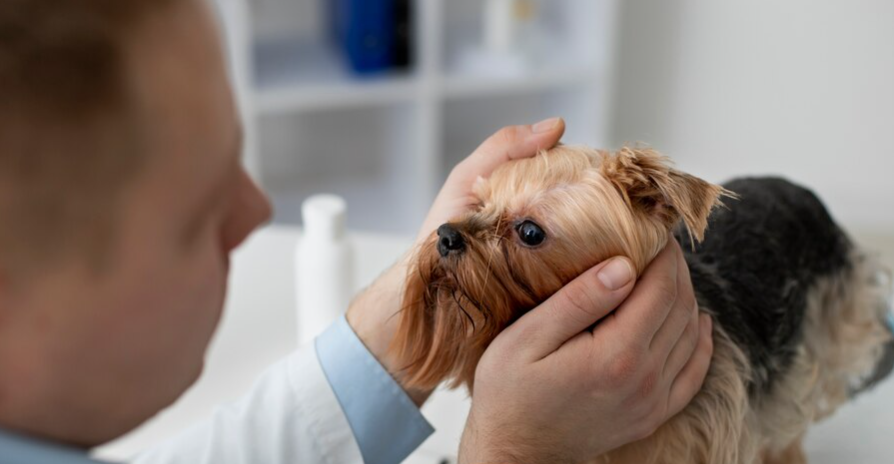if you’re thinking about your dog’s eye procedure, you’re in good company. The health of our fuzzy companions is a prime concern for the majority of pet owners. One normal concern is cataracts, which can affect a dog’s vision. In this complete guide, we’ll learn about dog cataract surgery and explore different pet surgeries under the umbrella of eye surgery.
Dog eye surgery is a crucial veterinary process aimed at improving and saving the vision of our dearest canine friends. Canine eye surgery is a crucial veterinary procedure aimed at improving and saving the vision of our dearest canine friends. Let’s look into the valuable insights!
Cataract Dog Eye Surgery: A Quick Look into Vision Restoration
Cataracts can cloud your dog’s vision, making day-to-day life difficult and irritating for both you and your fuzzy companion. Dog cataract surgery is a notable procedure that can restore your pet’s sight. Cataracts are the output of a clouding of the lens in the eye, causing blurred vision or even visual deficiency or blindness.
This dog eye surgery includes eliminating the affected lens and replacing it with an artificial one. It’s a critical procedure that requires accuracy and expertise, and the success rate is, in many cases, very high. Cataracts are a typical occurrence in older dogs. These cloudy developments in the eye’s natural lens can harm your pet’s vision.
Luckily, there are surgical solutions to address this issue. Cataract surgery is an approved method for restoring clearness to your furry companion’s eyes.
The Procedure in Detail
Canine cataract surgery is a sensitive procedure performed by professional veterinary ophthalmitis. While it’s necessary to discuss with your veterinarian for particular details, the general process involves:
Preoperative Assessment:
Your veterinarian will evaluate your dog’s general well-being and eligibility for surgery.
Anesthesia:
Your pet will be put under general anesthesia to guarantee they stay still and open during the process.
Small Incision:
A mini cut is made on the eye’s surface to get to the cloudy lens.
Lens Removal:
The impacted lens is carefully taken out.
Artificial Lens Implant:
An artificial lens is put instead of a cloudy one.
Stitching and Recovery:
The cut is closed with fine stitches, and your pet starts the recovery procedure.
Other Important Eye Surgeries for Dogs
Excluding cataract surgery, different eye surgeries are performed to treat different eye conditions in dogs. Some of the common eye surgeries include:
- Entropion Surgery:
This is a method to correct eyelid irregularities that cause pain and potentially harm the cornea.
- Glaucoma Surgery:
Glaucoma is a difficult condition that can generate irreversible vision loss whenever left untreated. Surgical intervention can help lower intraocular pressure and lighten pain.
- Cherry Dog Eye Surgery:
Cherry eye is a condition where the organ of the third eyelid becomes uncovered. This surgery is mostly required to readjust and get the organ set up.
- Tumor Removal:
At times, cancers or growths might develop in or around the eye. Surgical removal might be important to avoid further inconveniences.
Make Most of the Online Animal Health Solutions
Different online veterinary educational platforms understand the significance of your pet’s health and provide valuable animal health solutions. From dog cataract surgery to a wide range of other veterinary methodologies, they are committed to guaranteeing your pet’s well-being and happiness.
With many years of knowledge in the field, these platforms emphasize on conveying quality healthcare solutions to your dearest animals. They provide valuable information and are committed to helping pet owners make informed decisions about their pets’ well-being.
Frequently Asked Questions
Is dog cataract surgery the only solution for cataracts in dogs?
While surgery is a regular and productive treatment, it’s essential to discuss with your veterinarian to decide the best strategy for your pet. At times, dietary changes and medication might be suggested.
What’s the typical recovery time for dog cataract surgery?
The recovery time frame can differ; however, most dogs experience a notable improvement in their vision within a few weeks. Complete recovery might take a little longer, and it’s essential to follow your veterinarian’s post-surgery care instructions.
What are the signs that my dog may need eye surgery?
Signs that your dog might require eye surgery include persistent eye discharge, cloudiness or opacity in the eye, redness, squinting, or regular pawing at the eye. If you notice any of these side effects, it’s necessary to look for veterinary care immediately.


